The Food-Processing Industry in Indiana
From your Thanksgiving turkey to your favorite pop, the food-processing industry includes an eclectic variety of products. The general groupings within food processing, and their relative size in terms of employment, are shown in Figure 1.
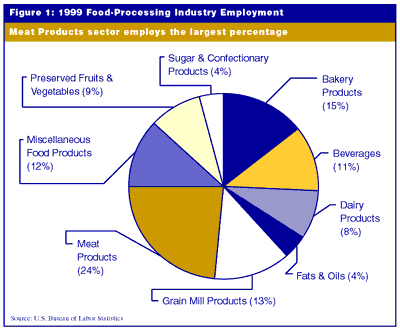
According to the most recent Covered Employment and Wages Survey data from the U.S. Bureau of Labor Statistics, Indiana's food-processing industry consists of 439 establishments employing more than 34,000 people (see Table 1). This represents 5% of Indiana's manufacturing employment in 1999 and only 1.2% of the state's total non-farm employment.
Click on table below to see larger version.
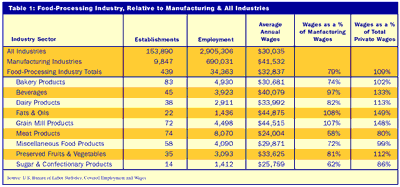
The majority of food processing takes place either at the point of agriculture production or at the place of food consumption. Therefore, most production will either be in states like California, Illinois, Ohio, Pennsylvania and Texas (consumption by population) or Arkansas, Georgia, Illinois, Iowa and Nebraska (agriculture production). To mitigate the effect of population, it is possible, using the 1997 Economic Census, to rank the top five food-processing states by value of shipments per capita (see Table 2).
Click on table below to see larger version.

Certainly due to Indiana's renowned agricultural tradition, the perception exists that it is also a major food-processing state. Indiana does rank among the top 10 producers of dairy products, processed grain and soft drinks in terms of employment, payroll and value of shipments (see Table 3).
Click on table below to see larger version.
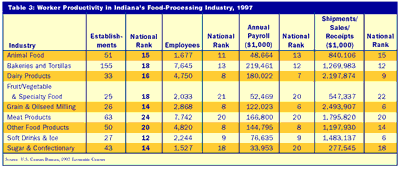
Although Coke or 7-Up cannot really be considered food, a major ingredient of soft drinks is the corn syrup produced by wet corn milling facilities in Indiana. Nevertheless, food-processing enterprises by no means dominate the state's economy. Within manufacturing alone, the industry is relatively small compared to motor vehicle production, metals, electronics and industrial machinery.
Wages within the food-processing industry vary significantly depending on the product area (see Figure 2). Wage differences can be explained, at least in part, by the variation in production methods and in the accompanying skill requirements. For example, wet corn milling involves high-skill, complex manufacturing processes and produces high-demand goods such as corn syrup, fructose, gluten and others. Wages in this area are significantly higher than in the meat-processing industry, where employees are not required to be highly skilled.
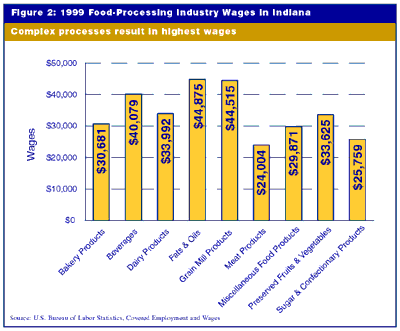
Given the advanced nature of Indiana's manufacturing sector as a whole, it is not surprising to find that food-processing wages are below the state average (see Table 1). On average, a manufacturing worker in Indiana will earn just over $41,000 per year, while those within food processing will average around $33,000 annually. Nevertheless, the average food-processing wage is approximately 9% higher than Indiana's overall average wage of approximately $30,000. Again, the variation in wages is not surprising given the variation in skill requirements across industries.
The productivity of the food-processing industry can be estimated using the dollar value of shipments per worker. Using the 1997 Economic Census for Indiana, three areas—grain processing, soft drinks and animal food, respectively—have the highest levels of productivity in the industry (see Figure 3). Generally, the level of value added during the production process will increase the value of shipments per worker—a trend that is reflected in these productivity results.
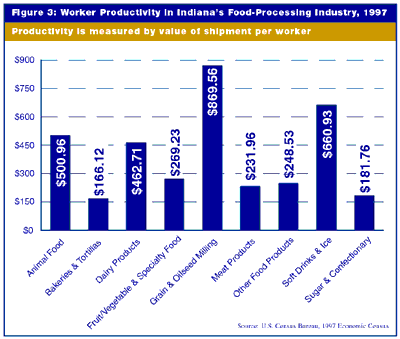
Technical Note: The 1999 food-processing data available through the Bureau of Labor Statistics are organized by Standard Industrial Codes (SIC). The 1997 Economic Census data, however, are organized by the new North American Industry Classification System. Therefore, the categories seen in Table 1 and Figures 1 and 2 will be different than those in Tables 2 and 3.
